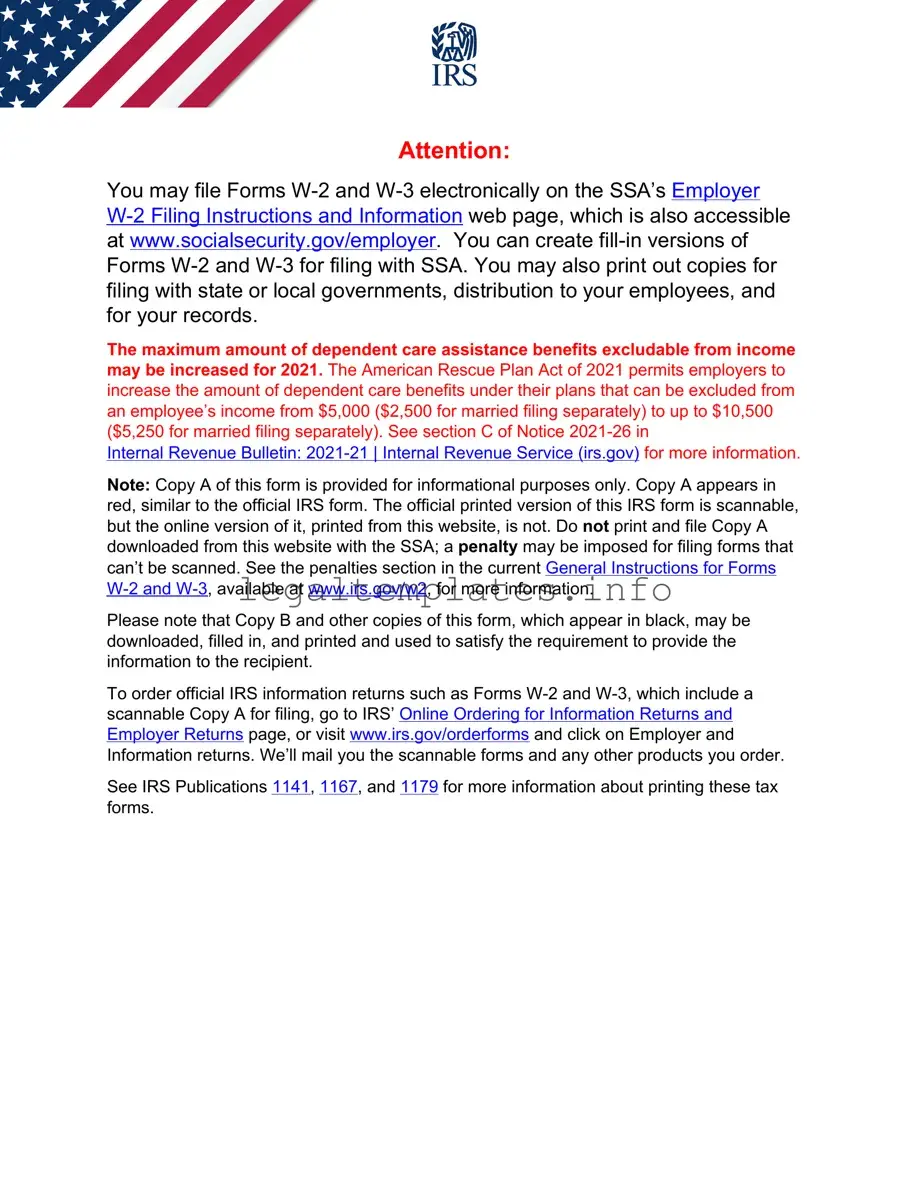What is a W-2 form?
The W-2 form, also known as the Wage and Tax Statement, is a document that employers are required to give to each of their employees and the Internal Revenue Service (IRS) at the end of the year. It reports the employee's annual wages and the amount of taxes withheld from their paychecks.
Who needs to file a W-2 form?
Employers must file a W-2 form for each employee from whom Income, Social Security, or Medicare tax was withheld. This includes any employee who had income tax withheld under the backup withholding rules, regardless of the amount of wages paid.
When is the W-2 form due?
Employers must send out the W-2 forms to their employees by January 31st of the year following the reporting year. For example, for the 2022 reporting year, the W-2 forms must be distributed to employees by January 31, 2023. Additionally, employers must file the W-2 forms with the Social Security Administration (SSA) by the same date.
What information is included on a W-2 form?
A W-2 form includes information such as the employer's identification number (EIN), the employer's name, and address, the employee's social security number, name, and address, wages earned, taxes withheld for federal, state, and local taxes, contributions to retirement plans, and other benefits.
What should I do if I find a mistake on my W-2 form?
If you discover a mistake on your W-2 form, contact your employer as soon as possible. Your employer will need to correct the error and issue a corrected W-2, known as a W-2c form. It is important to ensure that your income and deductions are accurately reported to the IRS.
Can I file my taxes if I haven't received my W-2 form?
If you haven't received your W-2 form by the due date, the IRS recommends contacting your employer to make sure they have your correct address and to ask them to resend the W-2. If you still don't receive your W-2 by February 14th, contact the IRS for assistance. You may still file your taxes using Form 4852, Substitute for Form W-2, Wage and Tax Statement, but be aware that your tax return may require correction later on, which could delay any refund you are owed.
Is a digital W-2 form valid?
Yes, digital W-2 forms are valid. Employers can provide employees with an electronic copy of their W-2 form. However, the employer must meet certain requirements related to consent and the manner of furnishing electronic statements outlined by the IRS to ensure the validity and legality of the electronic documents.
How do I get a copy of an old W-2 form?
If you need a copy of an old W-2 form, start by contacting your employer who issued it. If that's not an option, you can request a copy from the IRS by using Form 4506, Request for Copy of Tax Return. Be aware that there may be a fee involved, and it can take some time to receive the documents.







